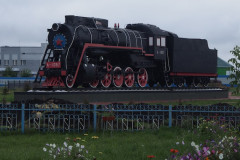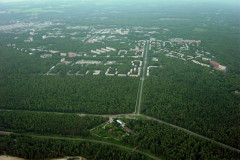Novosibirsk Region
Description
Novosibirsk Oblast is a federal subject of Russia (an oblast) located in southwestern Siberia. Its administrative and economic center is the city of Novosibirsk. The population was 2,665,911 as of the 2010 Census.
Geography
Overview
Novosibirsk Oblast is located in the south of the West Siberian Plain, at the foothills of low Salair ridge, between the Ob and Irtysh Rivers. The oblast borders Omsk Oblast in the west, Tomsk Oblast in the north, Kemerovo Oblast in the east, and Altai Krai together with Kazakhstan (Pavlodar Province) in the south. The territory of the oblast extends for more than 600 km from west to east, and for over 400 km from north to south. The oblast is mainly plain; in the south the steppes prevail; in the north enormous tracts of woodland with great number of marshes prevail. There are many lakes, the largest ones located at the south. The majority of the rivers belong to the Ob basin, many of them falling in dead lakes. Largest lakes are Chany, Sartlan, Ubinskoye, and some others.
Natural resources
As of 2007, the oil reserves of the region amounted to 204 million tons. In addition, Novosibirsk Oblast had free gas reserves of 600 million cubic meters, solute gas reserves of 5.2 billion cubic meters, and gas condensate reserves of 121,000 tons. Most of the oil and gas reserves are located in the Severny and Kyshtovsky districts.
The following metals can be found in the region: zirconium dioxide (0.7 million tons), titanium dioxide (2.9 million tons), bauxite (2,068,000 tons), and tin (588,000 tons). In addition, there are twenty-three fields of alluvial placer gold in the region (nineteen of which were being developed and prospected in 2006) and seven residual soil gold fields suitable for open-cut mining in the southeast.
Novosibirsk Oblast has 5.527 million tons of high-quality anthracite, as well as 2.720 million tons of long-flame and coking coal. Most of these are located in the Iskitim and Toguchin districts. The north part of the region also has peat fields with estimated reserves of 7.6 billion tons.
Karachinskaya mineral waterProspected mineral water reserves in the region amount to 6,948 cubic meters per day. The popular Karachinskaya mineral water originates from the region.
The oblast has 4,531,800 hectares of forests, with 509.88 million cubic meters of timber reserves. Most of the region's forests consist of softwood. Softwood forests cover an area of 3,481,300 hectares, while softwood timber is spread out over 387.96 million cubic meters. Coniferous forests - located mostly near the Ob River and the Salair Ridge - cover an area of 1,011,900 hectares with timber reserves of 121.39 million cubic meters. The economic potential of the forests is reduced by the fact that most of them are located in the north of the region, in areas that are difficult to access.
History
During the Middle Ages the region was populated by Siberian Tatar and Teleut tribes. Being constantly raided by Kalmyk nomads throughout the first centuries of the exploration of Siberia future Novosibirsk Oblast did not attract many Russian colonists, who preferred to settle around more northerly Tomsk. The first Russian village Maslyanino was founded in 1644. In 1716, officer Ivan Butkeyev built the Berd fortress that later became the city of Berdsk, the main center of future colonization and development of the region. Like many other parts of Siberia, the Berd lands became a safe haven for political dissents, fugitive serfs and religious sects from all across Russia.
For the most parts of its history, the Novosibirsk Oblast belonged to the Tomsk administration, initially as a part of the Tomsk uyezd of the Tobolsk Governorate and later, starting with 1804, the separate Tomsk Governorate. The turning point in history of the region was the construction of the Trans-Siberian and the Turkestan–Siberian railways. Founded in 1893, Novosibirsk, then Novonikolayevsk, became a transport hub of sub-regional importance and surpassed other major Siberian cities like Omsk and Tomsk in mere decades. In 1920, the capital of the Tomsk Governorate was moved to Novonikolayevsk, in 1921 the Novonikolayevsk Governorate was established. In 1925, most of the Siberian governorates were united as the Siberian Krai with Novosibirsk as the capital. In 1930, it was split into West Siberian (Novosibirsk) and East Siberian (Irkutsk) krais, the former existed until 1937. The Novosibirsk Oblast was finally established on September 28, 1937. Kemerovo and Tomsk became separate from it only in 1943-1944.









